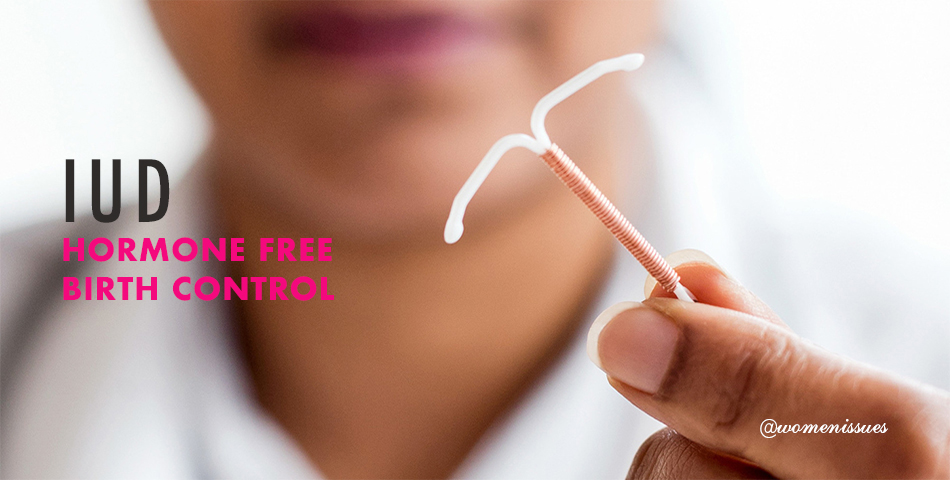The Intrauterine device (IUD) is the only super-effective non-hormonal birth control method around. A hormone-free contraceptive that is ideal for women in need of not interfering with their hormones. The use of injections, patches, and oral contraceptives may sometimes have bad effects on the body or on the skin, some women complain how they gain weight or how they get cellulite or get pigmentation and black spots on their skin. Every woman’s body and hormone levels are different, which is why the different reactions. Read on to find out how they work
What is IUD?
The intrauterine device is a small plastic device with a capital T shape that goes into the uterus as a form of contraception. IUDs are safe, very effective, and totally reversible. As effective and almost long term as similar to sterilization, but you need to know there are two different types of intrauterine devices; we have both non-hormonal (copper) and hormonal IUDs.The copper IUD has the tiny copper filaments wrapped on the vertical arm of the T which are completely free from any kind of hormones. But the hormonal ones work differently compared to the patches, injections and oral contraceptives. The vertical arm of the hormonal IUD like e.g Mirena contains a progestogen called levonorgestrel which is similar to the hormones made in our body & the arm releases a small amount of that hormone each day locally in the uterus for 5 years, no estrogen & typically fewer hormone side effects and fewer hormones in the blood.
N.B we have another IUD model called the copper pearls (IUB), an intrauterine ball which is not T shaped but basically, the method of action is similar to standard copper IUDs.
Your doctor will advise you on what birth control is best suited for you.
How do IUDS work?
An intrauterine device exerts its contraceptive effect through the copper filaments wrapped on it releasing small amounts of it to the body continuously for the number of years specified, that can be 3 years while most of them are 5 years and others can take even longer after which the device has to be removed. A new device can be inserted after removal of the old one should you desire to do so. The copper released will interfere with fertilization by
- affecting the movement of sperm & egg
- inhibiting the sperm from fertilizing the egg
- preventing the egg from implanting in the uterus
You can decide to remove it before the specified years and it can be easily be removed. Removal is a painless procedure but can/may cause less pain or bleeding. Note that after removal fertility will be promptly restored.
How is an IUD inserted?
It can be inserted by your doctor or gynecologist by first examining the position of the uterus. Local anesthesia can be used if needed or recommended but it should not cause much pain. The procedure is almost as similar as doing Pap smear with the same instrument (speculum) used. The procedure can be explained to you as & when it is done and it takes just a few minutes of your time
When can IUD be inserted?
- it can only be inserted when pregnancy is excluded
- to minimize the risk of undetected pregnancy, at least within 7 days of bleeding
- after 6 weeks of delivery when the womb is back to its position
- after the 1sttrimester of abortion
- when there is no genital infections
So it is important to come clean with your doctor if you recently had an abortion he might not know about and they usually make Pap smear to rule out any possible infections. Immediately after insertion, an ultrasound exam is performed to check if it is the correct position. The uterus needs to adapt to the new situation so menstrual pain may be experienced immediately and it usually subsides quickly. Immediate side effects may differ with women and the kind of IUD used. There can be pain and dizziness that should pass within half an hour in the resting position. There can be bleeding or pain for 1st few weeks which should diminish after a few months as it is normal to experience menstrual disturbances during that time. Your doctor will advise more on other risks or side effects involved, regarding the efficacy. You can be advised to be sexually active after 24hrs of insertion but with copper pearls (IUB) 5 days is advised to ensure correct placement.
Advantages of IUDs
- does not interfere with sex
- does not interfere with breastfeeding
- hormone free
- does not cause weight gain
- low maintenance – no need for daily or monthly attention
- some can help with regulating menses & reduce days
- a good alternative to permanent sterilization
- effective, safe & completely reversible
- more than 99% effective. That means fewer than 1 out of 100 women who use an IUD will get pregnant each year
Disadvantages
- painful periods
- while they reduce others can cause heavier or longer period days
What to look out for after insertion
Another examination is done about 4-12 weeks after insertion and once a year thereafter. Contact your doctor should you experience any of the following
- if you or your partner feel the device or if you feel pain during sex
- if you can no longer feel the threads or if you feel they are too long
- if you feel other parts of the device than the threads
- If you suspect you are pregnant – can be removed, if not the doctor will advise on the way forward
- If you suspect pelvic infection – this may impair fertility & increase the risk of ectopic pregnancy
- If you think you were exposed to STIs/STDs
- If you have persistent abdominal pain, fever or unusual vaginal discharge
- Or if you developed other sudden medical problems like recurring headaches, blood pressures, blur vision etc.
Any these signs may be due to perforation (when it penetrates the uterus)which means it has to be removed as soon as possible or expulsion (when it partially or completely fall out)and you will not be protected from pregnancy.
Whichever IUD you and your doctor decide is best for you, if it is correctly inserted with no disturbances there will be no forgetting like a pill or using it incorrectly like a condom; it gives a win-win option with more long-lasting, low-maintenance birth control. Remember should you have multiple sex partners it does not protect you from HIV & STIs and you need to condomise to stay fresh, clean and healthy.
**HAVE A SAFE JOURNEY TO PLANNED PARENTHOOD**


2 Comments
Pls can it remove itself?l discovered that my own IUD remove anddddd I went for scan and nothing is there .
Hi Dele. yes, it can remove by itself if it is not properly inserted.
”What to look out for after insertion
Another examination is done about 4-12 weeks after insertion and once a year thereafter. Contact your doctor should you experience any of the following
if you or your partner feel the device or if you feel pain during sex
if you can no longer feel the threads or if you feel they are too long
if you feel other parts of the device than the threads
If you suspect you are pregnant – can be removed, if not the doctor will advise on the way forward
If you suspect pelvic infection – this may impair fertility & increase the risk of ectopic pregnancy
If you think you were exposed to STIs/STDs
If you have persistent abdominal pain, fever or unusual vaginal discharge
Or if you developed other sudden medical problems like recurring headaches, blood pressures, blur vision etc.
Any these signs may be due to perforation (when it penetrates the uterus)which means it has to be removed as soon as possible or expulsion (when it partially or completely fall out)and you will not be protected from pregnancy.”